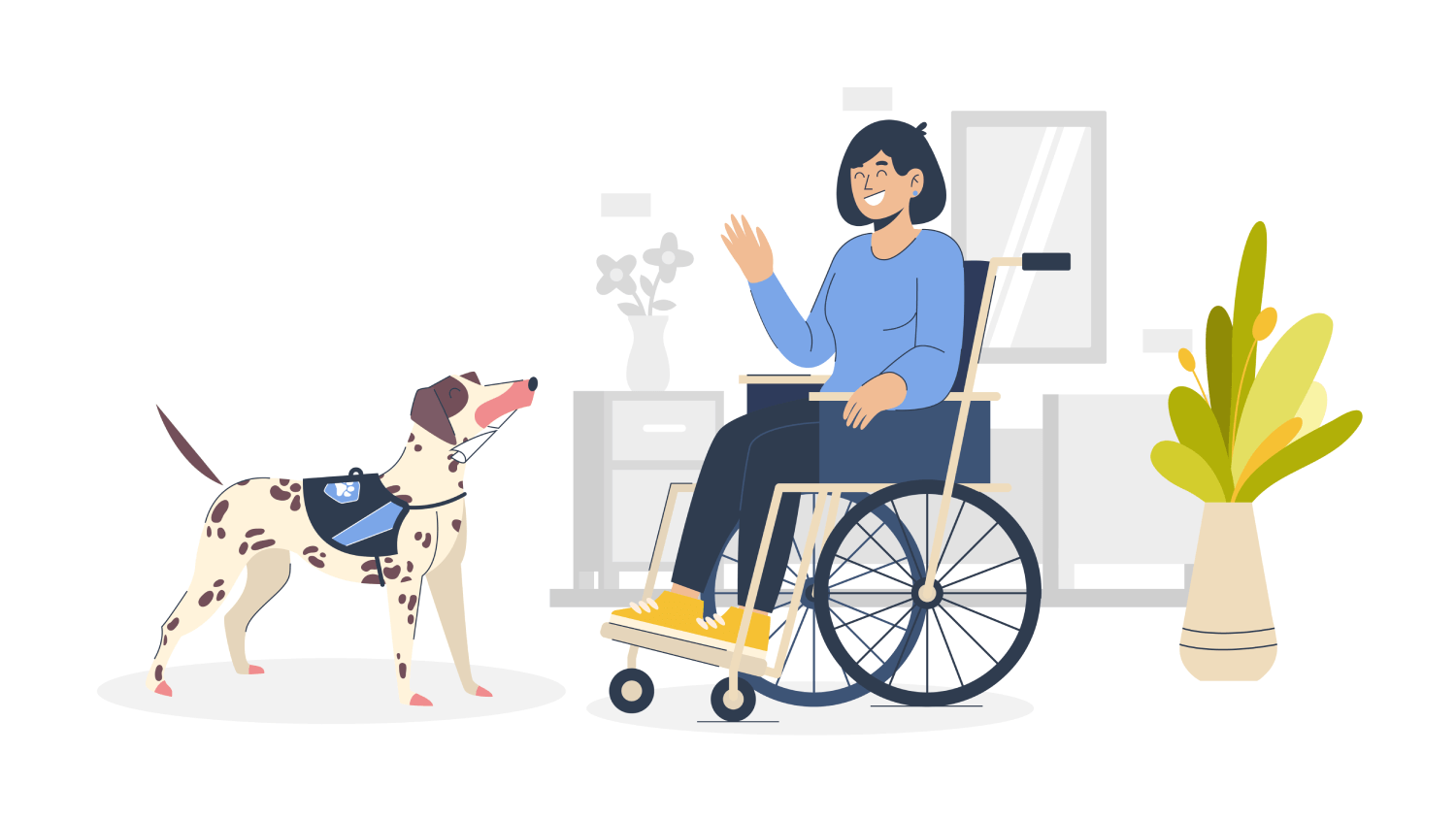Listed below are the most frequently used type of jobs for Service Dogs.
- Visual Assistance Dogs or Seeing Eye Dogs
- Helps guide their visually impaired or blind handler.
- Hearing Dogs
- Helps alert their deaf handler to environmental sounds such as alarms, doorbells, phones, cars, their name, etc.
- Mobility Assistance Dogs
- Helps provide bracing or counterbalancing to their handler that has a disability that impacts their balance and coordination or in a wheelchair.. They may also help with retrieving, opening/closing doors, day to day tasks or responding in an emergency situation.
- Diabetic Alert Dogs
- Helps alert their handler to dangerously low or potentially deadly blood sugar levels. These dogs are also trained to contact 911 on alert phone designed for dogs.
- Seizure Response Dogs
- Trained to act in response to their handler having a seizure. These dogs may retrieve medication, utilize a deep pressure stimulation technique to help reduce duration of seizure, or fetch a person to help.
- Severe Allergy Detection Dog
- Alerts their handler to life threatening allergens such as nuts, gluten or shellfish. These dogs typically carry medical information and emergency protocol in their vests to help aid being provided to their handler in an emergency situation.
- Medical Alert Dogs or MADs
- Helps alert their handler to dangerous physiological changes in their bodies such as blood pressure, hormone levels or other measurable bodily symptoms.
- Autism Support Dogs
- Assists handlers on the autism spectrum by calming and grounding them with the use of deep pressure stimulation. These dogs also help their handlers gain independence by aiding in daily tasks.
- Psychiatric Service dogs (PTSD Service Dogs)
- Help soothes their handlers through challenging emotional states. These dogs are also trained to intervene in destructive behavior, remind handlers to take medication and are trained to never leave their side.


